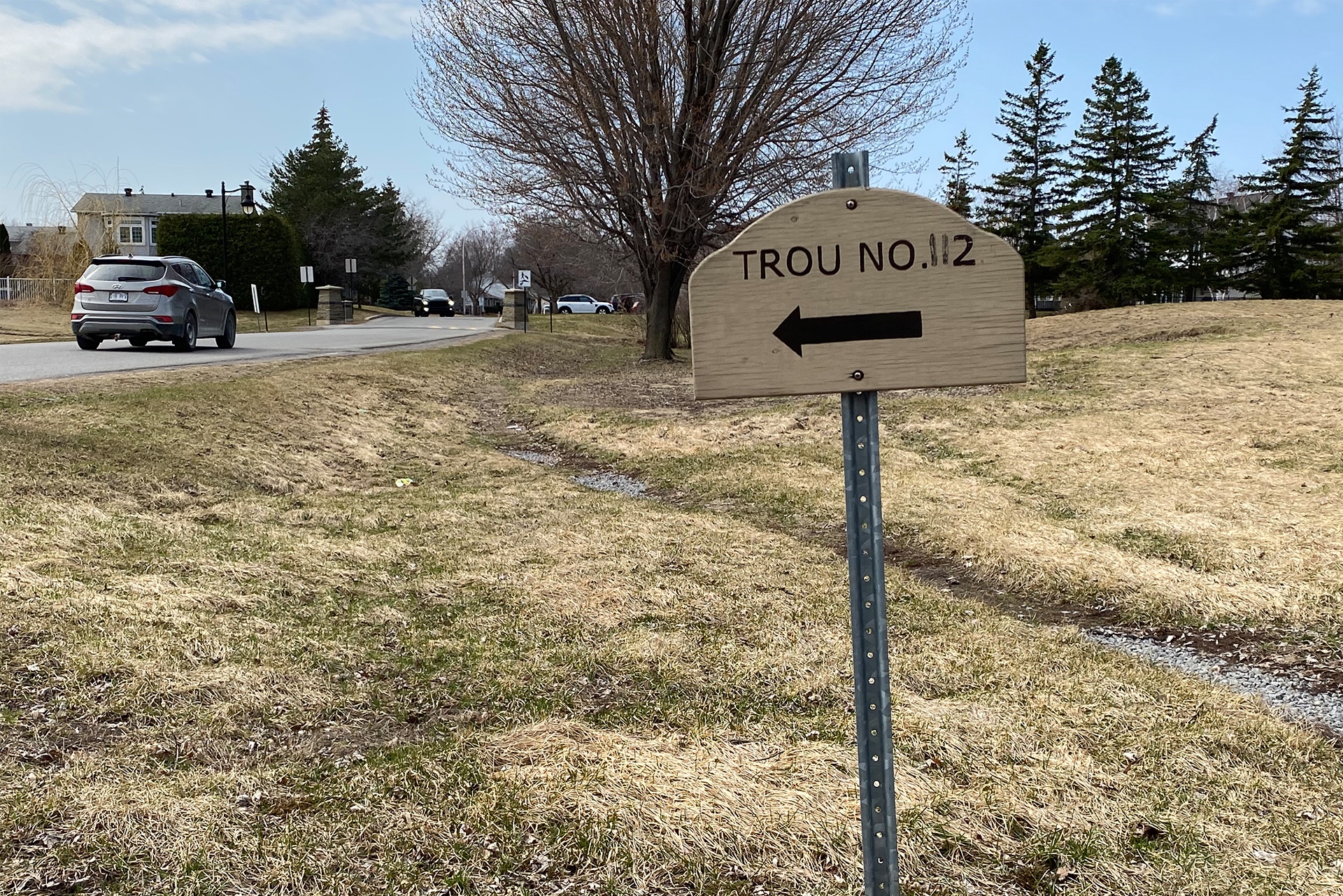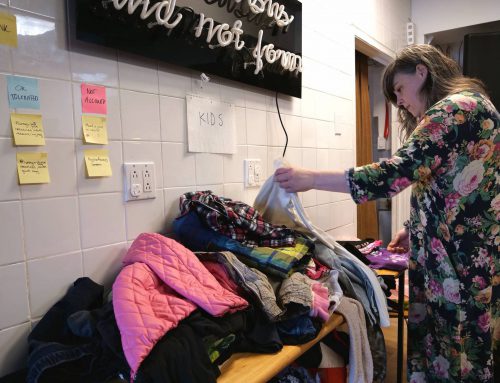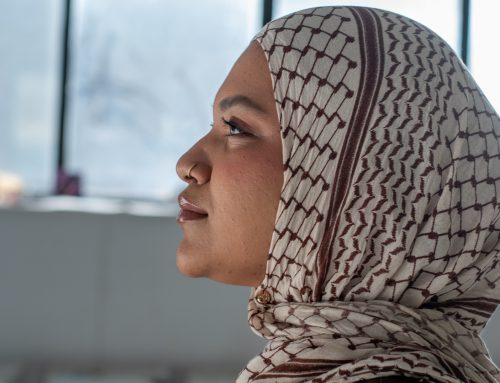BY Louis Pringle & Ann Krystel Michel
Yves Couturier loves to wake up in the morning to take in the fresh air from his balcony while admiring the oceans of grass of the old Candiac golf course. Couturier has been living in Candiac for more than three decades after moving there because of the city’s many greenspaces.
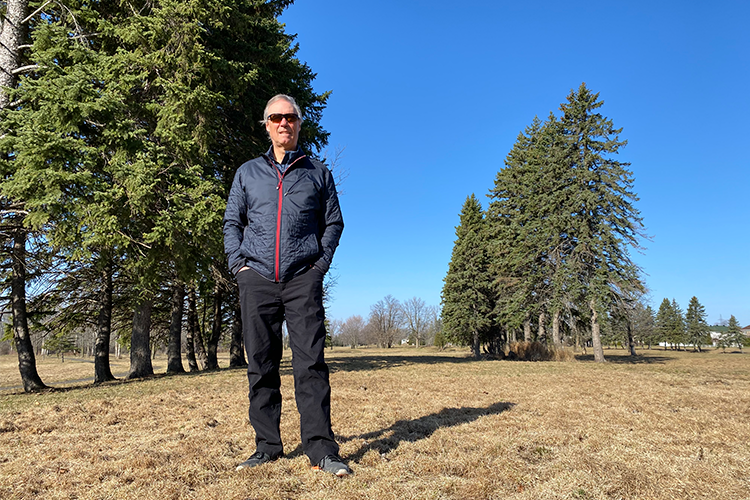
Couturier has seen Candiac’s residential growth since the 90s. He’s now fighting to preserve the last major greenspace in the city. Photo by Louis Pringle.
After years of enjoying the view from his backyard, Couturier’s view is now overshadowed by uncertainty since the sale of the old golf course to Groupe Maison Candiac (GMC), a local developer.
“We’re used to seeing trees and green grass in the backyard.” says Couturier. “I would definitely be cursing if I was to wake up to concrete buildings instead.”
Some citizens reached out to GMC in hopes they would preserve half of the golf course as green space. While GMC was originally open to this idea, their latest development project plans to keep only 20 per cent of the old green space.
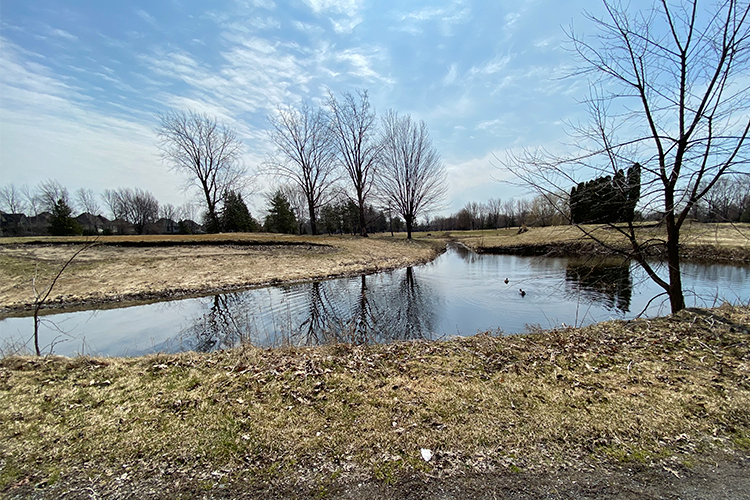
While it’s not plentiful, the fauna is still active around the course and is now able to freely roam the land without any major hinderings. Photo by Louis Pringle.
This plan sounded the alarm for Couturier and other residents looking to save one of the last green spaces in the city. The Regroupement des Résidents de Candiac (RRC) is fighting to preserve the area they describe as an urban cooling island — a mass of land which helps to reduce high temperatures of surrounding areas.
“The city slogan is ‘La ville sous les arbres,’” says Catherine Vallée, a biologist who’s also a member of the RRC. “Some people decided to move here because of the amount of trees in the city. I’ve lived here my whole life and we used to have a lot of nature around the city when I was younger. Now, it’s all gone.”
The group has a powerful ally in the city’s mayor, Normand Dyotte, who has come out on many occasions to declare his intention to keep the land zoned for recreational use.
“We are not changing the zoning for this land,” he says. “We do not have the intention of doing so, as we want to keep it under the recreational banner. We are looking at all our options to keep it as such.”
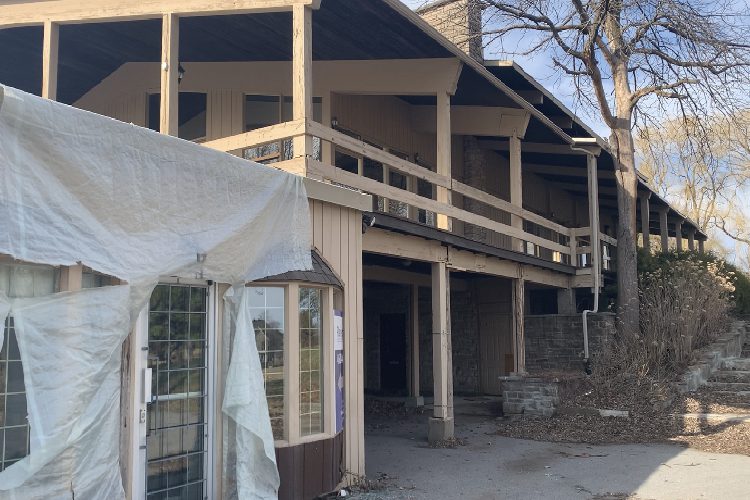
The dilapidated old clubhouse is one of the final remnants from the course’s glory days. Photo by Ann Krystel Michel.
The city launched a series of public consultations in October 2020 to get the pulse of public opinion regarding the future of the land.
An important question was brought up as one citizen asked why the city was reaching out for potential plans when it didn’t even own the land. The city’s general manager, Alain Desjardins, replied that the city needed a strong plan of action before any other step could be taken in acquring the land.
This decision by the city official is welcomed by the RRC. Both Couturier and Vallée are confident that some citizens will be able to come up with strong plans. Their main worry stems from the possibility of having to put up the citizens’ plans against GMC’s plan.
“You have to keep in mind that we are volunteers,” says Vallée. “We try to collect funds around the city to help pay for specialized services like urban planners and communications specialists. We have to come up with a project on our own dime to go up against the project of a multi-million dollar promoter.”
A key issue remains in the way of the city when it comes to purchasing the land. The current provincial expropriation law forces cities to pay a hefty amount to acquire the land. This is proving to be a major hurdle in the city’s quest to protect one of its last major green spaces.
A map of Candiac’s greenspaces turned into real estate projects. Media by Louis Pringle.
The recent experience of the city of Rosemère and the new landowner of its old golf course is an example of the provincial expropriation law in action. The Vachon-Varin group purchased the land on the city’s old golf course in 2019 for $18 million, but the price the city would have to pay to expropriate it is estimated to be more than $120 million.
The RRC believes changes to the law are key to accelerating the process for the city to take over the land and begin work on the redesign of the greenspace.
“It would give additional tools to the city,” says Couturier. “It would help them plan the city’s development. The mayor has come out on many occasions to express his desire to build a green city.”
Dyotte has proposed changing the Expropriation Act, in a joint statement with the mayors from Terrebonne and Mascouche, who are facing similar situations with old golf courses.
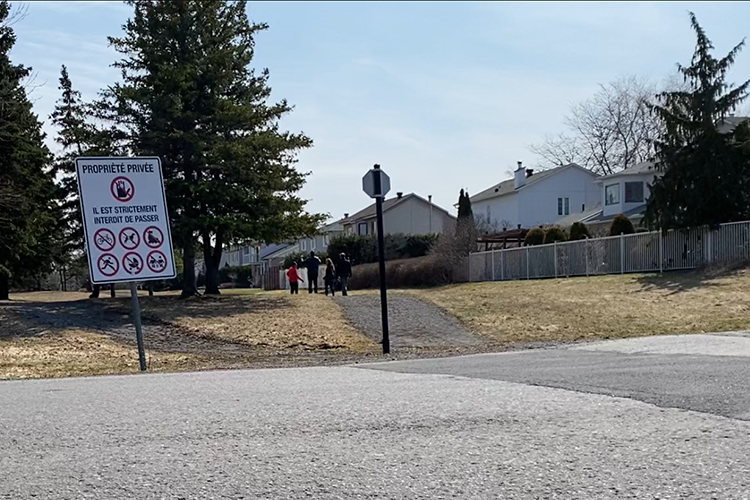
Despite warning signs indicating the old golf course to be private property, many nearby residents still use the old cart paths as walking trails. Photo by Louis Pringle.
They called for Andrée Laforest, Minister of Municipal Affairs and Housing, to provide the cities with more tools to preserve their greenspaces by changing the law and helping cities expropriate greenspaces through expanded funding programs.
This type of transformation keeps happening all over Greater Montreal. City people’s interest in the suburbs is partly to blame. Video by Ann Krystel Michel.
While Laforest and the government weren’t quick to respond to the mayors, they did receive support from the opposition in Quebec City. However, the MNA for Mercier, Quebec Solidaire’s Ruba Ghazal, proposes an alternative to rewriting the law.
“The government needs to apply a moratorium on zoning changes for golf courses,” she says. “Changing a law can be a long process and it can have many impacts, especially in the case of the Expropriation Act, but this law needs to be reevaluated.”
She adds that a clear difference needs to be made in the application of the law when it comes to real estate promoter groups and regular citizens.
Much like the City of Candiac, GMC has also been holding consultation sessions with members of the community who volunteered to join one of their four committees tasked with rethinking the old Candiac golf course to fit a communal vision.
Couturier and the RRC are hoping their plan for the repurposing of the old golf course will win out in the end.
“Ideally, we’d like to keep this land a 100 per cent green,” says Couturier. “We’d like to preserve the wildlife and the fauna. We want a place that doesn’t require too much maintenance to allow nature to take back some of the land. This is our wish for the kids and the next generations.”
